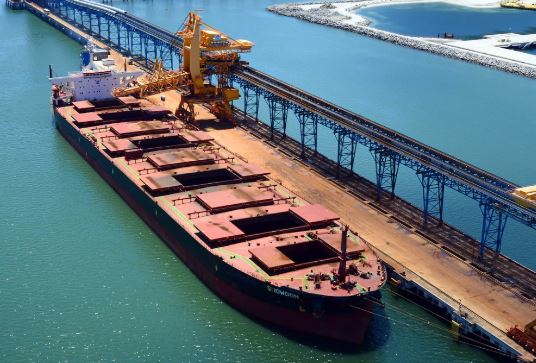Capesize freight rates dropped over market concerns over slowing iron ore demand and weakness in the paper and bunker markets.
Thus, the Capesize 5 time charter average dipped by $445 day-on-day to $18,304 on Monday, following a selloff session.
The Baltic Dry Index (BDI) followed the downtrend and dropped by 0.92% or 13 points day-on-day to 1,402 readings.
Weaker iron ore shipping demand to China
The recent rally of the freight rates was attributed to the high shipping demand from iron ore producing countries to China.
However, the slowdown in construction activity in China plus the 8-months high iron ore port inventory had lowered shipping demand for moving iron ore cargoes.
Thus, the freight rates in the Pacific came under pressure despite decent cargo list of iron ore and coal.
Major miners like Rio Tinto and BHP were active in the market and the indicative freight were heard at the $7.60/wmt to $7.75/wmt range for the west coast Australia to Qingdao route.
In the meantime, there was a standoff between owners and charterers in the Atlantic market with the indicative freight on the Brazil to China route heard at around high-$16s/wmt to $17.50/wmt level.
VLSFO prices plunge following weak crude oil prices
VLSFO prices slumped by $10/mt to $330.50/mt at the port of Singapore, following the plunge in crude oil prices.
Crude oil prices took a beating after Libya is likely to bring back production of 1 million barrel per day in coming months to further aggravate the oil supply glut.
The rising coronavirus cases from the second wave of pandemic, may also force nations to re-impose stricter social distancing and lockdown measures, which reduced oil demand.
